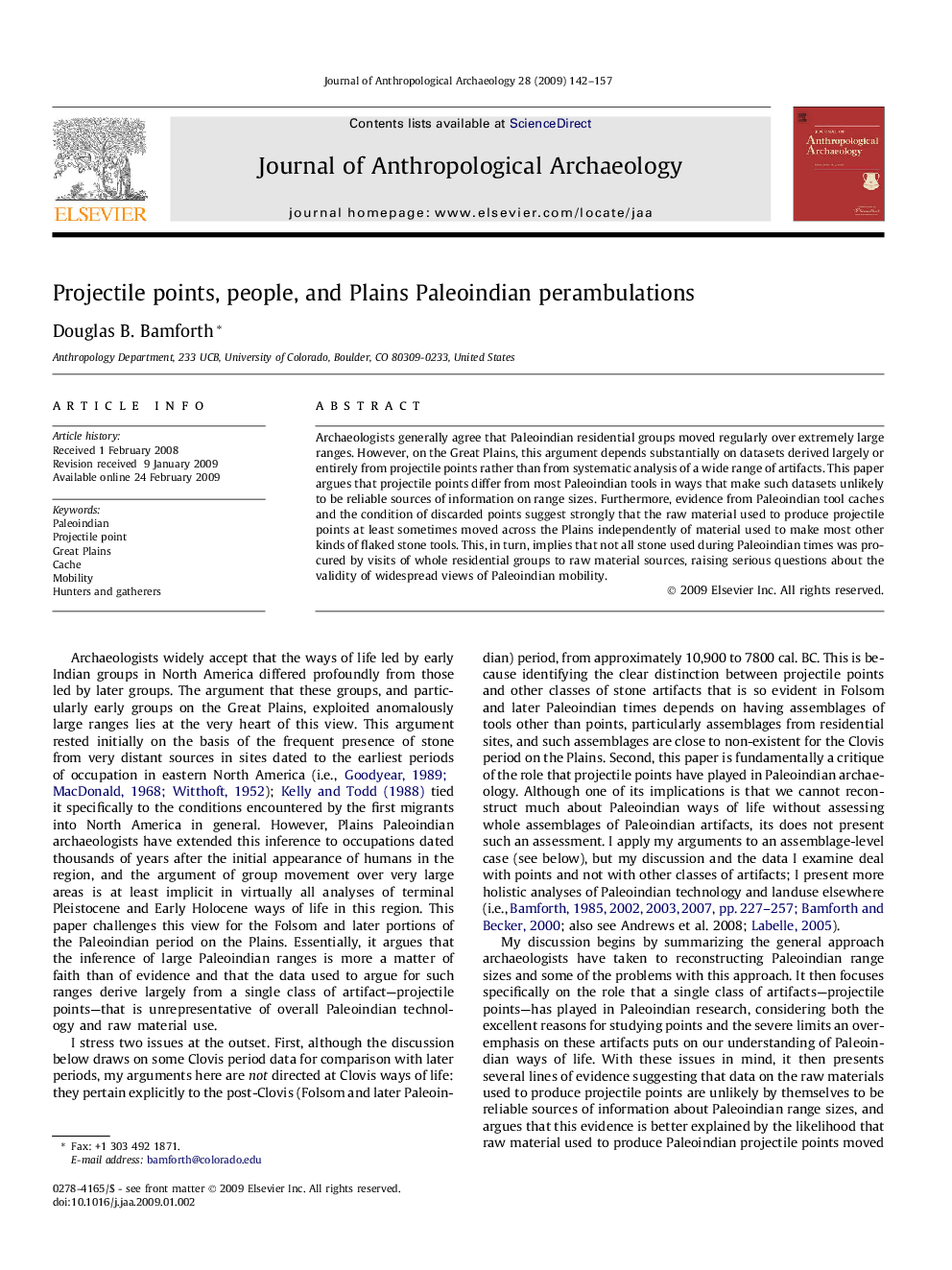| Article ID | Journal | Published Year | Pages | File Type |
|---|---|---|---|---|
| 1035168 | Journal of Anthropological Archaeology | 2009 | 16 Pages |
Archaeologists generally agree that Paleoindian residential groups moved regularly over extremely large ranges. However, on the Great Plains, this argument depends substantially on datasets derived largely or entirely from projectile points rather than from systematic analysis of a wide range of artifacts. This paper argues that projectile points differ from most Paleoindian tools in ways that make such datasets unlikely to be reliable sources of information on range sizes. Furthermore, evidence from Paleoindian tool caches and the condition of discarded points suggest strongly that the raw material used to produce projectile points at least sometimes moved across the Plains independently of material used to make most other kinds of flaked stone tools. This, in turn, implies that not all stone used during Paleoindian times was procured by visits of whole residential groups to raw material sources, raising serious questions about the validity of widespread views of Paleoindian mobility.
